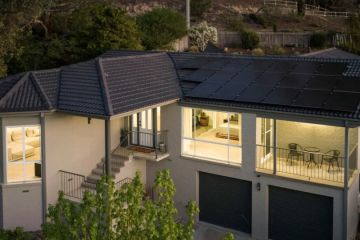Your smart home just got even smarter

Home automation technology – where are we now?
Lock the doors and windows, switch off the lights, close the garage door, turn the heating system down … As any home owner will attest, there’s a lot you need to do to your house every time you step out the door and before you go to bed each night!
Enter home automation: the wonderful world of lights turning themselves on and off, the whole home entertainment system switching on at the touch of a single button and the air conditioner cooling your living room before you get home.
Home automation has been an industry on the rise ever since the Jetsons graced TV screens in the 1960s. Now, home automation has attracted the attention of huge tech companies of the likes of Apple, Samsung and Google, who are promising to deliver a more seamless, integrated experience with platforms such as Apple’s HomeKit.
What’s possible?
“What you can do with home automation is limited only by your imagination,” says Darren Hornstra from Envious Technology, Australian distributors of popular Californian-designed home automation system Insteon.
Like many in the market, Insteon uses a hub that can be programmed to ‘talk’ to any electrical appliance or device in your home.
“You can use it to do something relatively simple, from switching on a light or automated pet feeder through to creating whole ‘scenes’ where a number of actions all occur at once.”
“One customer recently wanted to use home automation to create an instant party atmosphere in his townhouse, so we set up a system where the lights dimmed, the music started and the spa switched on – all at the touch of a button.”
Home automation has application in myriad situations and appeals to home owners for all sorts of reasons.
“Home automation clients are incredibly varied and include young homeowners, older people, people with disabilities or special needs, people with a holiday house they want to maintain from afar, right through to people who just love the technology behind home automation and the possibilities it creates around achieving comfort, convenience and security in the home.”
Smartphone and tablet connectivity have seen home automation increase in popularity in recent years. Apps that can remotely control home theatre and sound systems, security systems, heating, cooling and more are widely available.
Ahead: true automation
Home automation is now moving into a new era, where multiple systems and devices can be integrated under a single banner.
With Apple’s HomeKit or Samsung’s SmartThings, for example, the system control moves to the phone or tablet you already own, and many different home automation products or systems can all be controlled using this single device.
“HomeKit doesn’t include any hardware. Companies including Insteon and others will be able to manufacture the hardware that will work with the HomeKit platform,” explains Hornstra.
Next generation home automation requires even less user input. The GPS on a phone or tablet can auto-trigger ‘scenes’ to occur automatically when you move in and out of a location. For example, when you’re three kilometres from home your heating will automatically come on, or when your teenager walks in the front door you’ll get an automatic alert, wherever you are – handy if you’re trying to keep track of him or her while you’re at work!
With Apple’s HomeKit, developers can create software that will enable scenes or commands to be actioned using Apple’s intelligent assistant, Siri. Tell Siri you’re going to bed, and she’ll do the rest!
Hornstra says the new players are making the home automation sector more accessible.
“Despite the diverse client base, home automation has remained a bit of a niche market. Products from the big tech companies are bringing home automation into everyday conversations and making it more appealing to consumers.”
Home automation in the 21st century is fast becoming more seamless and integrated, and more popular as a result.
States
Capital Cities
Capital Cities - Rentals
Popular Areas
Allhomes
More







